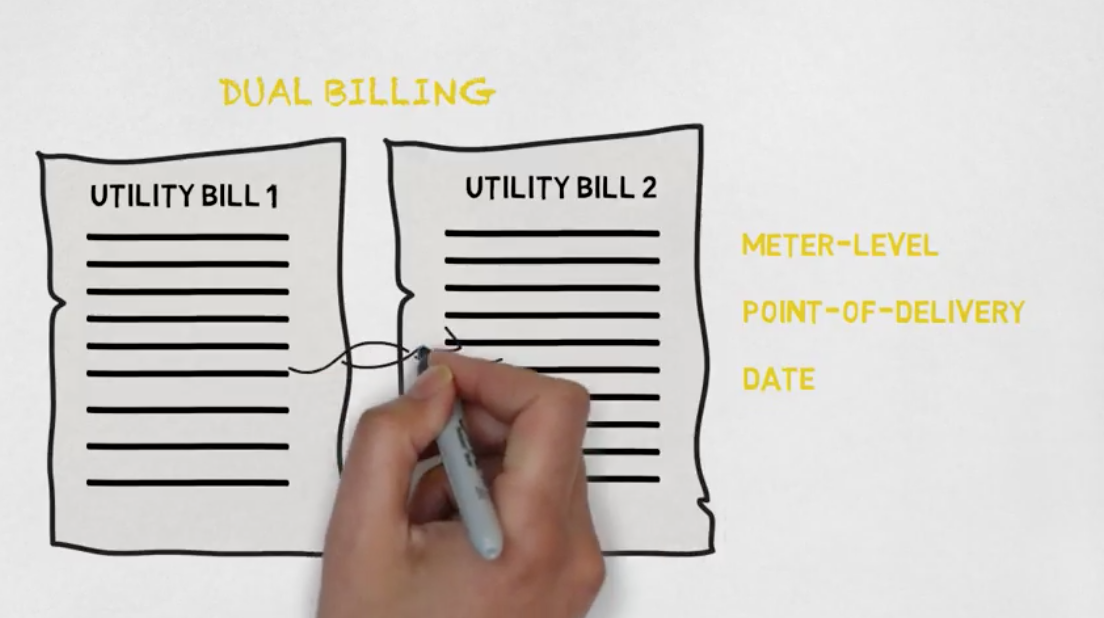
What Is Dual Billing?
Amy Hou | November 6, 2017 | Energy & Sustainability
Welcome to the latest episode of EduSketch. Today, we define dual billing as it pertains to utility consumption and discuss how dual billing affects energy management.
There are two types of energy markets: regulated and deregulated. In a regulated market, one or two utility providers have a legal monopoly over all customers in the area. In a deregulated market, utility customers can shop among several providers for the best rates and can utilize more than one provider for their needs. As a result, customers in a deregulated market can often receive several electric and natural gas bills within a given billing cycle.
Deregulated markets bill their customers in one of two ways:
- A “dual provider, single billing” scenario will include charges and fees from both the primary and secondary billing agent. A data platform like Urjanet can process the single bill from the primary provider, being sure to include in a separate section all of the details and data points from the secondary billing agent. This way, the bill remains a single source document, but an energy manager can access more granular data to evaluate each individual provider and site.
- In a “dual provider, dual billing” scenario, the utility’s customer will receive two separate bills each month, one from each utility. For dual billing, Urjanet can capture meter-level, point-of-delivery, and date details on both statements, enabling easy linking of the two bills to prevent duplication.
Want to learn more about how Urjanet can empower your energy management program? Contact a data specialist today.
Related Resources:
- What Is Summary Billing?
- A Day in the Life: Enterprise Utility Bill Management
- Solutions Sheet: Utility Data for Energy Procurement
If you like what you’re reading, why not subscribe?
About Amy Hou
Amy Hou is a Marketing Manager at Urjanet, overseeing content and communications. She enjoys writing about the latest industry updates in sustainability, energy efficiency, and data innovation.
You May Also Like
Support Business Continuity by Embracing ESG
Honor Donnie | March 18, 2022 | Energy & Sustainability
